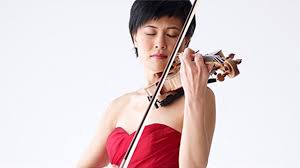Barbican Hall, 15 January 2016
For many years now I have thought of Sakari Oramo as one of our finest interpreters of Elgar and his handling of the Second Symphony certainly lived up to expectation. He finds so much life and energy in the work without it ever becoming raucous or course, which it so easily can in insensitive hands. Moments of introspection in the first movement never cloud the vitality of the musical line and the wonderful flourish of the end brought a smattering of applause.
The second movement had a nobility to it which countered any sentimentality that might have crept in and he is unafraid of the radiant climaxes within the score which come close to Mahler in their impact. The Rondo was clipped and exhilarant – even dangerous in its impact at times – with great clarity from the brass players. If the final movement felt a little calmer at the outset this was something of a mirage for it built in tension and authority to mirror the darker passages of the Rondo. It is difficult to believe the work had a difficult birth – but then it is far more forward looking than earlier Elgar as this reading clearly showed.
The evening had opened with a finely honed reading of Butterworth’s A Shropshire Lad, the ultra-hushed ppp at the start almost unheard. Sakari Oramo is not afraid of the lush sentimentality which the work allows and he encouraged his soloists to indulge themselves in the beauty of the lines spun.
Between these two we had the UK premiere of Anna Clyne’s The Seamstress. This is a disconcerting title which I admit I don’t really understand for the work is a well-constructed single movement violin concerto. Jennifer Koh had given the world premiere and brought warmth and sensitivity to a work which is commendably easy to take in on a first hearing but I suspect will more than merit a return visit. There are hints of minimalism throughout, with rolling, wavelike figures returning to underpin the narrative. A longer slow pizzicato section falls like exaggerated rain drops, turning into a brief but violent storm, which eases itself into a more aggressive confrontation between soloist and orchestra. When the calm returns we seem to be in a classically refined slow movement with hints of a gentle romanticism. A bridge passage takes us to a lyrically expansive melody and more of the rolling measures we had encountered at the opening until the whole quietly fades. There are hints of Irish folk music present throughout and the sense of a strong narrative line, which is never overtly spelt out, makes it all the easier to engage with on a first hearing. I hope the BBC will let us hear it again – probably too late for this year’s Proms but you never know!

